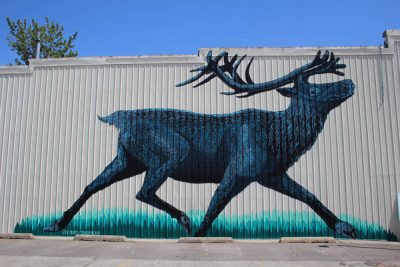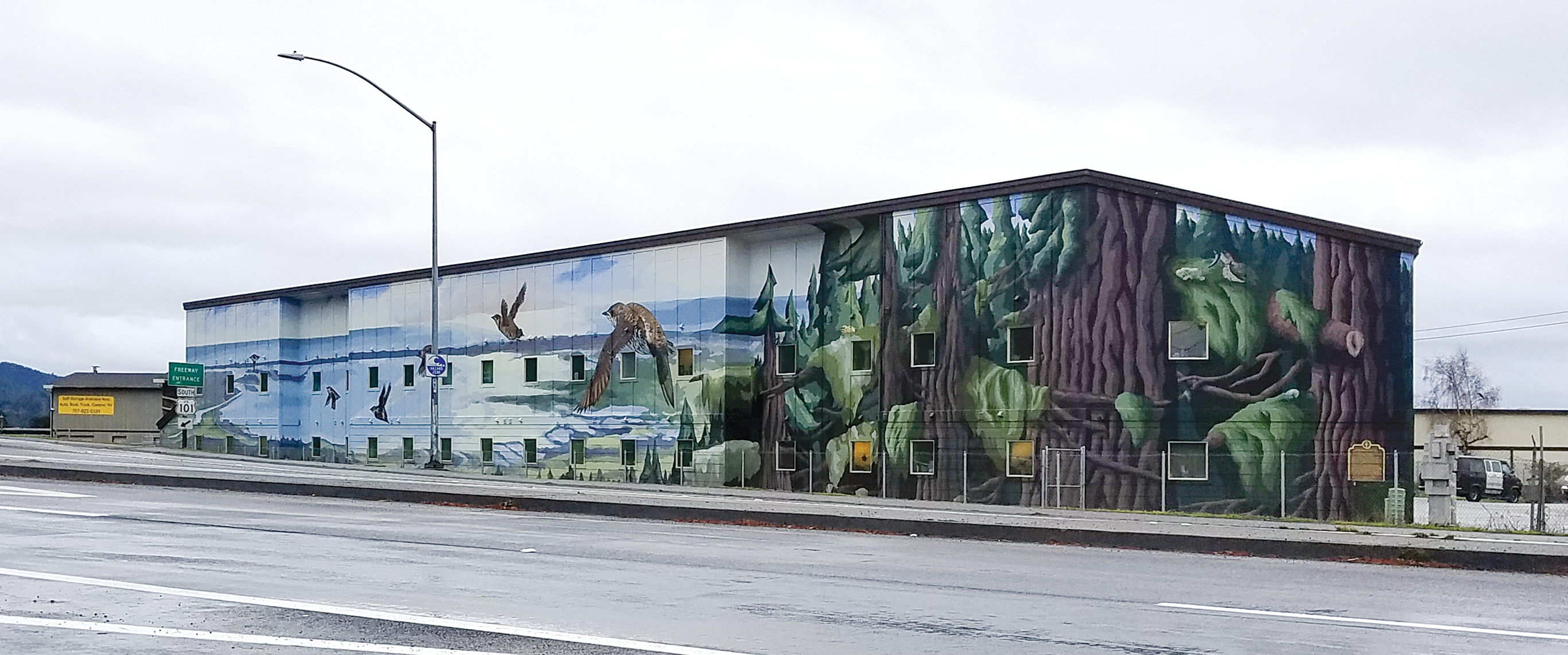Endangered Species Mural Project
Art takes nature as its model. ~ Aristotle

Just as nature inspires art, art inspires actions to defend wild places and the wild creatures that live in them. With this in mind, the Center for Biological Diversity’s Endangered Species Mural Project works with artists, scientists, and organizers to bring endangered wildlife onto the streets of cities and towns around the country. These murals are imagined as tools to help celebrate local endangered species within communities, and to encourage people to make connections between conservation and community strength. Spearheaded by Portland artist Roger Peet, the mural project promotes an affinity for the natural world and the diverse species that help define it.

Mural of two Southwest species, the Sonoran pronghorn and the Yuma clapper rail, in Yuma, Ariz., by artist Roger Peet and Phoenix-based muralist Lucinda Hinojos, with help from students at Arizona Western College.

This 256-foot-long mural in Arcata, Calif., by Lucas Thornton, celebrates the endangered marbled murrelet, an ancient seabird from the Pacific Northwest that flies inland 50 miles to nest among deep moss in old-growth forest canopy. .

Mural of the Austin blind salamander, a small amphibian whose habitat is found entirely within the Austin city limits and is threatened by pollution and development. The mural was painted by project coordinator Roger Peet with help from students at Austin Discovery School in Austin, Tex.

This mural showcases the ocelot, Aplomado falcon, Mexican gray wolf, Chiricahua leopard frog and Sneed’s pincushion cactus — five endangered species that share habitat along the U.S.-Mexico border.

The Taylor’s checkerspot is an endangered butterfly once found widely in prairies in Oregon and Washington, but now restricted to a few dwindling populations and at an extreme risk of going extinct. This mural in Cottage Grove, Ore., was done by Roger Peet.

One of a series of grizzly bear murals in Oakland, Calif., by Roger Peet and Fernando “Rush” Santos.

Carolina northern flying squirrel mural in Asheville, N.C., by Roger Peet and Tricia Tripp.

Streaked horned lark mural in Portland, Ore., by Roger Peet. Photo by Olivia Conner.

Sockeye salmon mural in Portland, Ore., by Roger Peet. Photo by Jerry McCarthy, Port of Portland.

Dakota skipper mural at Oceti Sakowin camp at Standing Rock., N.D., by Roger Peet.

White fringeless orchid mural in Berea, Ky., by Roger Peet and Trish Tripp.

Southeast freshwater mussels mural in Knoxville, Tenn., by Roger Peet, Merrilee Challiss and Trish Tripp.

Jaguar mural in Tucson, Ariz., by Kati Astraeir.

Yellow-billed cuckoo mural in Los Angeles, Calif., led by Jess X. Chen.

Whale mural by Icy & Sot (working in coordination with Roger Peet) in Los Angeles, California. Photo Jess X. Chen.

Watercress darter mural in Birmingham, Ala., by Roger Peet and Birmingham artists Merrilee Challiss and Creighton Tynes. Photo by Kyle Crider.

Monarch butterfly mural in Minneapolis, Minn., by Roger Peet and Barry Newman.

Arctic grayling mural by Roger Peet in Butte, Mont.

Mountain caribou mural in Sandpoint, Idaho. Mural artists Mazatl and Joy Mallari (from the Justseeds Artists Cooperative) worked with Roger Peet.
Message From the Artist
“Everywhere on Earth is unique, with qualities that distinguish it from other places both near and far. One of those qualities is biodiversity — the plants and animals that call a place home and may not be found anywhere else. Those species embody an area’s natural history and contribute to what makes it irreplaceable — and they also have something to say about the future, as many are in danger of going extinct. When we lose species, the places we inhabit and the lives we live become poorer and shallower as a result. To help bring these species into the light, we decided to paint them on the walls.
“The goal of this project is to foster connections between people and the other forms of life that surround them. Whether that’s a fish in a river, a butterfly flitting from plant to plant, or a caribou chewing lichen from a tree, we’re bringing together artists and communities to create big, bold images that will become part of the neighborhoods where they’re created, making it a little easier for people to care about the species struggling to survive in their midst.”
Roger Peet is a Portland-based artist who is coordinating this project in association with the Center for Biological Diversity.

